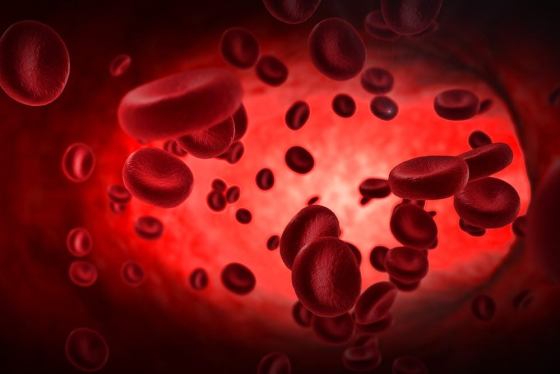The news that comes out of research universities and hospitals often sounds too hopeful: Here's a gene that maybe, could potentially end obesity. This newly discovered protein pathway might sort-of, some day cure cancer. Do any of the thousands of studies published each year really result in a meaningful change in someone's life?
Here's your answer: For the eighth consecutive year, the Cleveland Clinic has selected 10 technologies and discoveries that are already making an impact. “We look for innovations that are somewhat disruptive, so a new medication isn't just a little better, it's substantially better,” says Dr. Michael Roizen, who headed the panel of 30 medical professionals that selected this year's finalists. Check out the technology of the future that's already on our doorstep.
The Bionic Eye
The “Argus II” takes a video signal from a camera built into sunglasses and wirelessly transmits that image to implants in the retinas of people who have lost their vision. Though it’s been available in Europe since 2011, the U.S. Food and Drug Administration (FDA) only approved the eye earlier this year. “This really is like Star Trek technology,” Roizen says. The system isn't perfect. It lets a blind person regain basic functions like walking on a sidewalk without stepping off a curb, and distinguishing black from white socks, but only lets you read one giant-sized word at a time on a Kindle. Plus, as the retina itself heals over the implant, the quality of vision decreases. The Argus II is currently only approved for people who have lost their sight from retinal pigmentosis—which affects 1 in 4,000 Americans. But the technology could soon help the more than 1.75 million people who suffer from macular degeneration.
The Cancer Gene Fingerprint
Not all cancers are equally lethal—cancer in your prostate means a longer survival rate than a malignancy in your brain, for example. But even prostate cancer comes in multiple flavors ranging from manageable to very bad. By analyzing the mutated genome of a tumor, doctors can now pinpoint whether a cancer is sensitive to a certain chemotherapy, or one that doesn’t respond at all to current treatments. Knowing the subtype might mean jumping directly to a clinical trial that could save your life.
The Seizure Stopper
For the 840,000 epileptics suffering from sudden, uncontrollable seizures, the NeuroPace is like “a defibrillator for your brain,” Roizen says. The system includes sensors implanted in the brain that can spot the first tremors of an oncoming seizure. Then it sends electrical pulses that counteract the brain's own haywire signals, stopping the seizure in its tracks. Even more impressive: The NeuroPace can be fine-tuned by doctors based on its performance. In the first year it was available, seizure episodes were reduced by an average of 40 percent—but 2 years later, they dropped by 53 percent.
The Hepatitis Cure
Until recently, treatment for hepatitis C fell into the good-but-not-great category, with only around 70 percent of patients being cured. And that was after as much as 48 weeks of a strict anti-viral drug regimen, including injections of interferon—which causes a number of debilitating side effects. But the new drug Sofosbuvir is a much more potent killer of hep C, with success in as many as 95 percent of patients. Even more, the medication only has to be administered for 12 weeks, sans interferon injections.
The Anesthesiologist's iPad
Surgeons may get more glory, but anesthesiologists probably play the most vital role in keeping you alive during surgery. They're the last face you see before you're put into a medicated sleep so deep you don't even notice that your body is being peeled open. Between keeping track of your heart rate, breathing, and brain functions, an anesthesiologist also needs to be familiar with the ins and outs of the procedure so they can adjust sedatives and painkillers—without causing complications. The new “perioperative information management systems” include software on touchscreen-enabled computers that can warn doctors if things are going south, keep track of the surgeon's workflows, and document every step of the procedure. All are essential when surgeries last up to 16 hours and docs need to pass the reins to a fresh pair of eyes.
The Fecal Transplant
The idea of taking someone else's poop and giving it a new home in your own colon may sound repulsive, but the treatment has proven remarkably effective in curing infections of C. difficile—a nasty bacteria that kills 15,000 people each year. Take heart: The digested food waste in feces isn't itself the cure. You're simply gaining some of the helpful bacteria living in the donor's gut—like a farmer choosing the hardiest crops to seed next year's fields. “The bacteria produce proteins that are involved in a lot more diseases than we realized,” says Roizen. Still grossed out? Researchers in Canada have developed a method to deliver just the bacteria—no feces—via an oral pill, skipping the need for a poo enema.
The Heart-Saving Hormone
Around one in four people who are hospitalized for heart failure don't last much longer than a year. But a new drug called Serelaxin has upped the odds of survival by as much as 37 percent, according to a University of California, San Francisco study. It's a synthetic version of the hormone relaxin, which is produced by pregnant women to help with the increased stress carrying a fetus places on the heart. “It not only opens up your blood vessels to supply your organs oxygen, but it has anti-inflammatory properties,” Roizen says. Serelaxin's life-saving potential is profound enough that in June, the FDA dubbed it a “breakthrough therapy,” putting it on a faster track for approval in hospitals.
The Robot Doctor
If you're undergoing a colonoscopy, you'll want something to take the edge off (for obvious reasons). But even a light sedative to help you snooze while doctors spelunk your butt requires the presence of an anesthesiologist—which translates to $1 billion in additional medical expenses, according to a study in the Journal of the American Medical Association.
Enter the Sedasys: a computer with an attachment on the IV that meters out the correct amount of sedative and monitors vitals. It even includes an earpiece to wake patients up if necessary. That allows docs to administer “light to moderate” sedation on their own, with a single anesthesiologist supervising multiple patients. “If Michael Jackson's doctor had this and knew how to use it, then Michael Jackson would still be alive today,” says Roizen.
The Better Heart-Attack Risk Test
Today you get a cholesterol test to assess your risk of heart attack, but soon you'll be more worried about your trimethylamine N-oxide (TMAO) levels. Why? People with the highest levels of TMAO in their blood have 2.5 times the risk of a heart attack compared to those with the lowest levels, according to a recent study in the New England Journal of Medicine. TMAO is a compound produced by intestine bacteria—yep, the same ones involved in fecal transplants—after you eat choline, which is found in eggs, red meat, and dairy. Once in your bloodstream, TMAO accelerates the process of cholesterol forming into plaques in your arteries. “We're learning why red meat is hazardous, and what could be done to avoid that hazard,” Roizen says. Beyond simply avoiding red meat, preventive steps could include probiotics or medications that pinch off TMAO-producing pathways.
The Precision-Guided Cancer Treatment
The difficult goal in any cancer treatment is to kill the tumor while leaving healthy cells alone. Recently, a better understanding of what makes cancer cells tick has allowed scientists to develop a class of drugs that pinpoint a weakness in cancer's uncontrolled growth. For example, in lymphomas and leukemias, scientists have determined that the growth is controlled by a protein called Bruton's tyrosine kinase (BTK). After years of experimentation, doctors developed a new drug called Ibrutinib that blocks BTK. A pair of studies in the New England Journal of Medicine this summer found that the oral pill helped 71 percent of chronic leukemia patients and 68 percent of patients with a type of non-Hodgkins lymphoma. Most importantly, Ibrutinib killed off the lymphoma while leaving the rest of the immune system alone. “Hopefully this will lead to a whole new class of drugs that will be cancer cell-specific,” says Roizen
ABUJA: Training Schedule for Basic Life Support BLS, Pediatric Advanced Life Support (PALS), Advanced Cardiovascular Life Support ACLS, First Aid, CPR, AED
PORTHARCOURT: Training Schedule for Basic Life Support BLS, Pediatric Advanced Life Support (PALS), Advanced Cardiovascular Life Support ACLS, First Aid, CPR, AED
LAGOS: Training Schedule for Basic Life Support BLS, Pediatric Advanced Life Support (PALS), Advanced Cardiovascular Life Support ACLS, First Aid, CPR, AED





